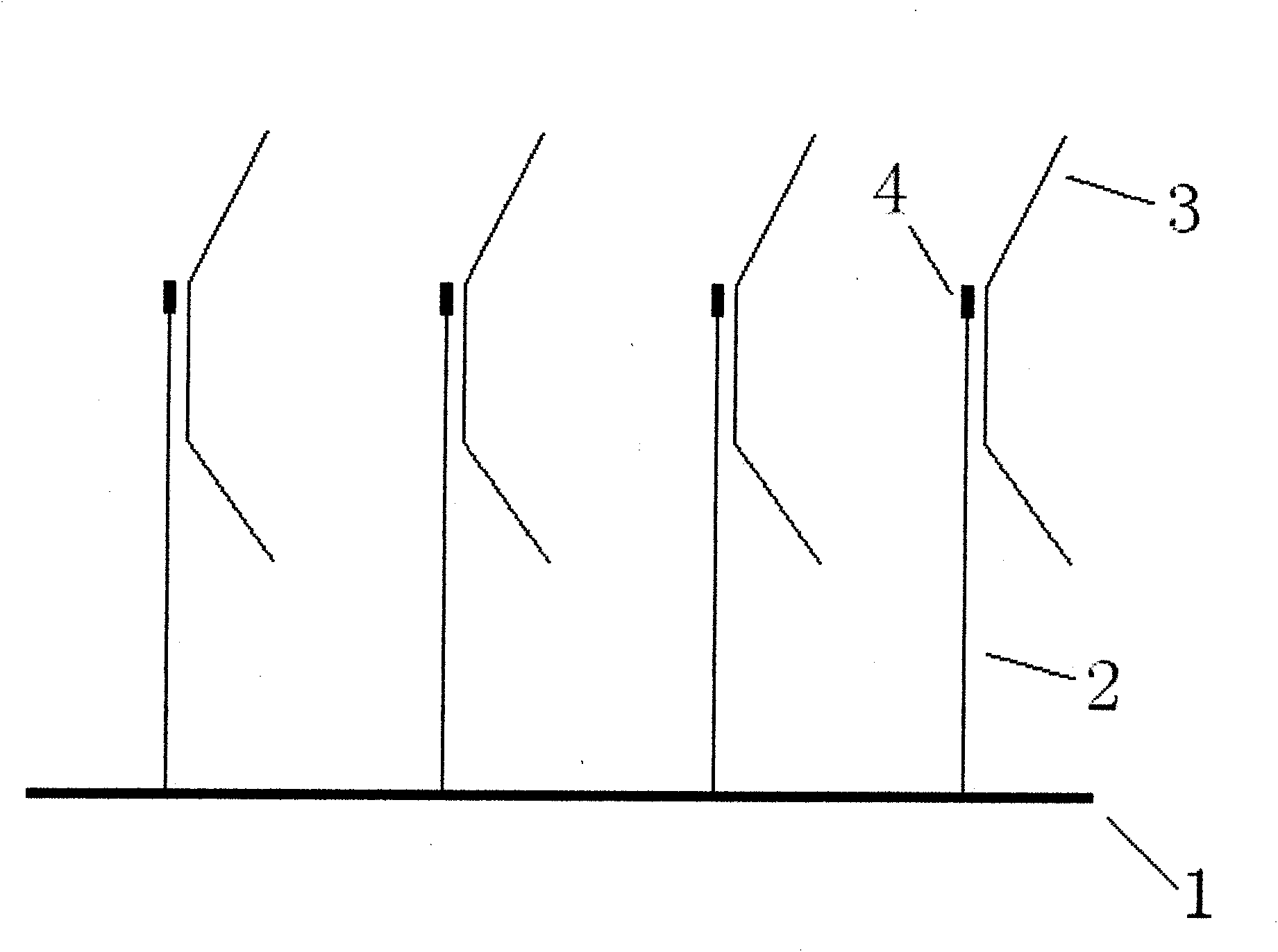DNA sequencing method based on primer array chip
A DNA sequencing and array chip technology, applied in the field of DNA sequencing, can solve the problems of high cost, increase reliability, and high false positive rate, and achieve the effects of high accuracy, low cost, and improved accuracy
- Summary
- Abstract
- Description
- Claims
- Application Information
AI Technical Summary
Problems solved by technology
Method used
Image
Examples
Embodiment 1
[0021] like figure 1 , fix the 5' ends of a group of primers with known sequences on the substrate at preset positions and arrange them into a primer array chip, and the 3' ends of the primers are 5 bases in total 4 5 = 1024 kinds of all arranged sequences, in which the 3' terminal sequence is a reverse complementary primer, which is fixed at the adjacent position on the substrate, and the middle of the primer is a merging sequence of 5 bases, and its bases are four bases A mixture of bases A, T, C, and G, the 5' end of the primer is 10 bases A, the chip area is less than 3mm×5mm, and can be placed in a 200ul PCR reaction tube.
[0022] Put 4 identical chips into 4 200ul PCR reaction tubes containing four different dideoxynucleotides (ddATP, ddCTP, ddGTP and ddUTP) with fluorescent labels respectively, and the reaction tubes also contain PCR buffer , DNA polymerase and double-stranded DNA to be tested. The double-stranded DNA to be tested is prepared by precipitating with abs...
Embodiment 2
[0026] Fix the 5' ends of a set of primers with known sequences on the substrate at preset positions and arrange them into a primer array chip. The 3' ends of the primers are 6 bases in total 46 = 4096 kinds of all arranged sequences, of which the 3' ends The sequences are reverse complementary primers, which are fixed at adjacent positions on the substrate, and the middle of the primers is a 5-base merger sequence, which is a mixture of four bases A, T, C, and G. The 5' end is 10 base A.
[0027] Add a drop of reaction solution containing four different dideoxynucleotides (ddATP, ddCTP, ddGTP and ddUT), PCR buffer, DNA polymerase and single-stranded DNA to be tested to four identical chips. On the surface of the chip, the single-stranded DNA to be tested is prepared by precipitating the product obtained through asymmetric PCR amplification, washing with 75% ethanol, drying, and dissolving in pure water.
[0028] Put all the above 4 chips into the chip hybridization instrumen...
PUM
 Login to View More
Login to View More Abstract
Description
Claims
Application Information
 Login to View More
Login to View More - R&D
- Intellectual Property
- Life Sciences
- Materials
- Tech Scout
- Unparalleled Data Quality
- Higher Quality Content
- 60% Fewer Hallucinations
Browse by: Latest US Patents, China's latest patents, Technical Efficacy Thesaurus, Application Domain, Technology Topic, Popular Technical Reports.
© 2025 PatSnap. All rights reserved.Legal|Privacy policy|Modern Slavery Act Transparency Statement|Sitemap|About US| Contact US: help@patsnap.com

